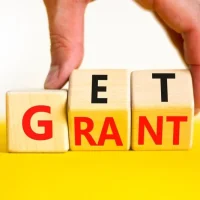Rapid response grants are designed to provide immediate financial assistance to organizations and individuals facing urgent needs or unexpected challenges. These grants are typically issued by foundations, government agencies, and non-profit organizations to address pressing issues that require swift action. The primary goal of rapid response grants is to enable recipients to mobilize resources quickly, implement solutions, and mitigate the impact of crises.
This can include anything from natural disasters and public health emergencies to social justice movements and economic downturns. The nature of rapid response grants often means that they are smaller in size compared to traditional grants, but they are characterized by their speed and flexibility. For instance, a community organization may apply for a rapid response grant to provide immediate support to families affected by a sudden flood.
The funding can be used for various purposes, such as emergency shelter, food distribution, or medical assistance. The key aspect of these grants is their ability to facilitate timely interventions that can make a significant difference in the lives of those affected by unforeseen circumstances.
Eligibility Criteria for Rapid Response Grants
Eligible Organizations
Generally, organizations that are eligible for rapid response grants include non-profits, community-based organizations, educational institutions, and sometimes even individuals or informal groups. Many funders prioritize applications from entities that have a proven track record of addressing similar issues or that are embedded within the communities they serve.
Project Criteria
In addition to organizational eligibility, funders often look for specific project criteria. For example, the proposed project must typically address an urgent need or crisis that has arisen recently. Some funders may also require that the project aligns with their mission or strategic priorities.
Capacity and Timeliness
Furthermore, applicants may need to demonstrate their capacity to execute the proposed activities within a short timeframe, as rapid response grants are intended for immediate action rather than long-term projects. Understanding these criteria is crucial for potential applicants to tailor their proposals effectively.
Application Process for Rapid Response Grants
The application process for rapid response grants is often streamlined to facilitate quick decision-making. Many funding organizations recognize the urgency of the situations that necessitate these grants and have designed their application procedures accordingly. Typically, the process begins with a brief letter of inquiry or a preliminary application form that outlines the basic details of the proposed project.
This initial step allows funders to assess whether the project aligns with their priorities before requesting a full proposal. Once a preliminary application is approved, applicants may be invited to submit a more detailed proposal. This can include a project narrative, budget, timeline, and information about the organization’s capacity to carry out the project.
Given the expedited nature of these grants, applicants should be prepared to provide concise yet comprehensive information that clearly articulates the urgency of the need and the intended impact of the proposed activities. Some funders may also conduct interviews or request additional information before making a final decision.
Documentation and Information Required for Rapid Response Grants
When applying for rapid response grants, applicants must prepare various documents and information to support their proposals. Commonly required documentation includes proof of nonprofit status, such as a 501(c)(3) designation in the United States, which verifies that the organization is recognized as tax-exempt. Additionally, applicants may need to provide financial statements or budgets that demonstrate their fiscal responsibility and ability to manage grant funds effectively.
Beyond financial documentation, applicants should also include a clear project description that outlines the specific needs being addressed, the target population, and the anticipated outcomes. This narrative should convey not only what will be done but also why it is essential to act quickly. Funders often look for evidence of community support or collaboration with other organizations as well, which can strengthen an application by demonstrating a collective effort to address the issue at hand.
The more comprehensive and well-organized the documentation, the better positioned an applicant will be in securing funding.
Tips for Writing a Strong Proposal for Rapid Response Grants
Crafting a compelling proposal for rapid response grants requires clarity, urgency, and a strong narrative that resonates with funders. One effective strategy is to start with a powerful opening statement that captures the essence of the crisis being addressed. This could involve sharing a poignant story or statistic that illustrates the immediate need for intervention.
By framing the issue in a way that evokes emotion and urgency, applicants can engage funders from the outset. Another critical aspect of writing a strong proposal is to clearly outline the proposed activities and how they will directly address the identified need. It is essential to provide a detailed plan that includes specific actions, timelines, and measurable outcomes.
Funders want to see that applicants have thought through their approach and can articulate how they will evaluate success. Including testimonials or letters of support from community members or partner organizations can also enhance credibility and demonstrate broad-based support for the initiative.
What to Expect After Applying for Rapid Response Grants
After submitting an application for a rapid response grant, applicants can expect varying timelines for feedback depending on the funding organization’s processes. Many funders prioritize quick turnaround times due to the nature of these grants; however, it is not uncommon for applicants to wait several weeks before receiving any communication regarding their proposal’s status. During this period, it is advisable for applicants to remain proactive by preparing for potential follow-up questions or requests for additional information.
If an application is successful, recipients will typically receive notification along with details about disbursement procedures and any reporting requirements associated with the grant. It is crucial for grantees to understand these obligations fully, as compliance with reporting requirements is often tied to future funding opportunities. Conversely, if an application is not funded, many organizations provide feedback on why the proposal was not successful.
This feedback can be invaluable for refining future applications and understanding how to better align with funder priorities. In summary, rapid response grants serve as vital resources in times of crisis, enabling organizations to act swiftly and effectively in addressing urgent needs. By understanding eligibility criteria, navigating the application process efficiently, preparing necessary documentation, crafting strong proposals, and knowing what to expect post-application, potential grantees can enhance their chances of securing funding and making a meaningful impact in their communities.









































